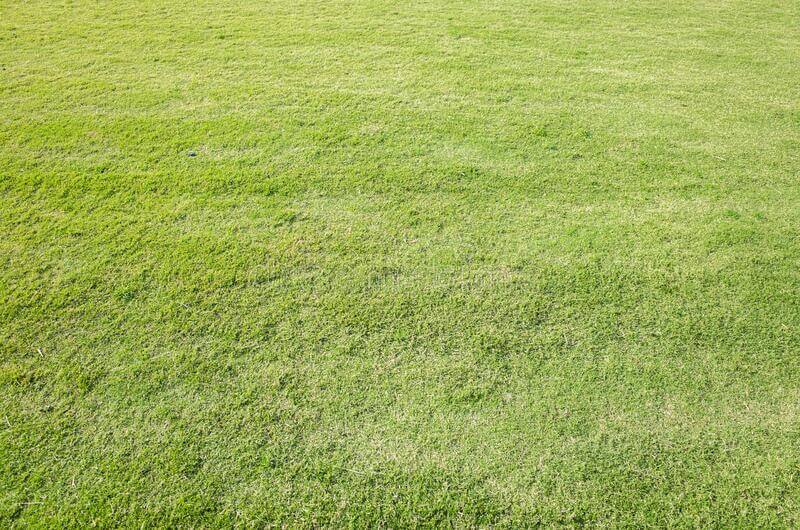Soil is the basis for a beautiful, healthy lawn. And although many homeowners do not consider soil composition as a potential threat to grass health, many grass quality issues can be attributed to unhealthy soil. One of these problems is the salinization of the lawn’s soil which is also used for maintaining shrubs in front of the house.
Soil salinization is the process of accumulation of salts harmful to plants (chlorides, sodium carbonates, sulfates) in the soil. Saline soils are found in different natural and climatic zones, but salinization can be facilitated by a combination of special conditions and factors of soil formation like climate, relief, groundwater and water regime, wind, vegetation, improper soil management.
So what do you do about this problem? How to notice it, avoid it, and what measures to take if it has already happened?
Soil Salinization Indicators
Salinization is visibly noticeable just by looking at the soil surface, the change of speed in water infiltration, and vegetation state. In cases of high salinization, the signs get more severe and impossible not to notice. For instance, if it was just a slight whitening on the soil surface, in severe cases it changes into distinct salt crystals.
Home Lawn Salinity Management Tips
Here are the top tips to help you prevent and tackle leaching at your home lawn.
Test Soil and Irrigation Water
If you want to know exactly what your lawn needs, check the soil composition every three to four years and send a soil sample to your local research laboratory. Such an analysis will help determine the quality of the soil and its composition, including the content of salts, organic matter, nitrate, nitrogen, phosphorus, and lime. Besides, you can take test results to your nearest gardening store to aid in finding fertilizers and additives that are fitting for your lawn specifically just like you found the beautiful rare flowers for your garden.
At the slightest tendency to an increase in salinity, find the reason for it ( wrong irrigation regime, fertilizers and their doses, irrigation water quality, or the rise of saline groundwater). If you find the reason, immediately react accordingly.
Leach Salts from the Soil
How can soluble salts be removed from soil? Leaching is the answer. That’s why they are soluble salts – they can be washed out. For effective salt leaching, you need two things – good quality water (fresh, low in salt content) and good water permeability of the soil.
Use Rainfall Effectively
But what if your water has a higher salt content than is acceptable for leaching and irrigation in general? How, then, to wash out the salts from your lawns? Make the most of natural precipitation: rain and snow meltwater. Autumn chiseling, snow retention, soil profiling – all these operations will be of invaluable help in such cases.
Plant Salt-tolerant Species
The beauty and quality of a lawn directly depend on the correct selection of seed material. This is a very important step in creating a flawless lawn. To begin with, you must decide what function it will perform – decorative or special (for outdoor activities, games, etc.). The choice of grass seeds will depend on this. Then, choose grasses that are most tolerant to soil salinity.
For instance, some turfgrass species have higher resilience to salinity compared to others. Such salt-tolerant grasses enable easy salinity management in the home lawn and can be used for future plantings and winter overseeding.
Manage Irrigation Usage
The biggest mistake most lawn owners make is over-watering the lawn, which causes excess vegetation to grow. Besides, watering every day prevents the roots from going deep into the soil and is also a waste of water. Instead, it is best to water the lawn sparsely but abundantly and be careful to see if the lawn needs additional irrigation.
The soil that has a large percentage of clay in its composition, or soil that is compressed due to frequent walking on it, will not absorb moisture well, so watering the lawn so often would not make sense.
Use Mulching
Leave the cut grass particles where they were thrown by the mower after mowing. In this case, you can not only avoid fiddling with the grass catcher, but you can also fertilize the soil with these particles. If you mow the grass often enough, the cut particles will be short and small, which means they can be easily absorbed by the soil, and the lawn will not look sloppy.
Many modern lawnmowers have a mulching function already built-in. The principle of operation of such lawnmowers is as follows: the grass is cut, shredded, and drugged into the very base of the lawn, not staying on the surface. Thus, the mulch becomes as efficient as possible.
Use Fertilizers Carefully
There is a misconception that it is impossible to grow a lawn with your own hands, and in order to give the grass a bright green color, you need to use as much fertilizer as possible. However, this is not the case.
Private lawn owners usually use a lot more fertilizers and pesticides than lawn care professionals, which ruins the lawn. Excessive fertilization also harms the environment: fertilizers are washed off into streams and reservoirs, polluting water and soil.
However, most modern fertilizers are produced in granules, and it is not difficult to distribute them evenly over the lawn. In small areas, a manual fertilizer spreader can be used for this, while a wheeled spreader is preferable for large areas.
Overall, soil salinity in home lawns can be prevented and easily treated if not neglected. Following the tips above, you can make smart decisions on your lawn management to avoid any irreversible changes to soil health.

